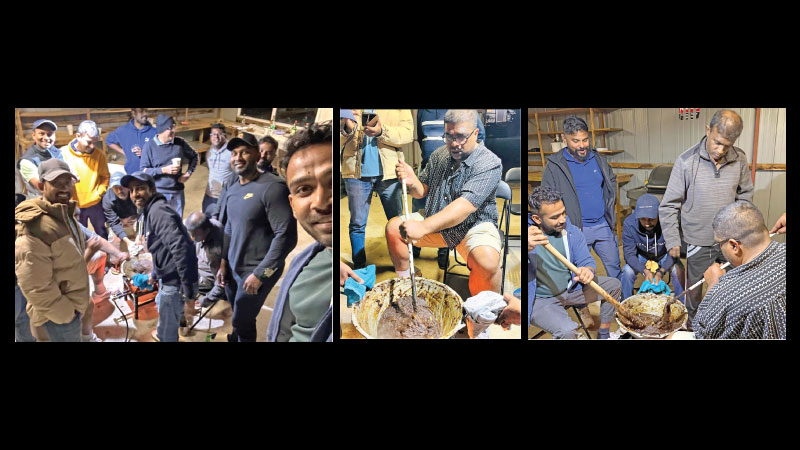On Friday April 11, somewhere in a garage in Cooma in New South Wales, a group of young Sri Lankan males gathered around several cooking utensils, and lit up a gas stove.
The night was cold and the wind howling through the small township gateway to the Snowy mountains of Australia heralded colder days and freezing winds of the approaching winter.
Thousands of miles away from their land of birth, the young men, dressed in warm clothes and hoodies, poured measured quantities of water and a white liquid into a large pan on the gas burner, and added quantities of brown powder and stirred the mixture.
Cheerful banter
Amid cheerful banter, they did not spare a thought that they were doing important elder women’s business which would have been unheard of a few generations before in their homeland.
But it was a business that needed doing; for in two days on April 13, it would be the Sinhala and Tamil New Year Day celebrated by many Sri Lankans the world over. It was also unheard of for a Sinhala New Year table lacking the traditional sweetmeat ‘Kalu Dodol’.
What made it elderly women’s business was that the sweet, thicker than jelly dark substance mixed with cashew nuts and cardamoms required carefully measured quantities of the ingredients, knowledge of the heating process, experience and a lot of patience for its making.
Usually, the art of making ‘Kalu Dodol’ passed down from mother to daughter and in most households, it was the mother with experience who would proudly undertake the task. Even then, not everyone could do it. A slight variation of heat on the cooking pan or a slight mistake in the quantities of ingredients being mixed and stirred would lead to a harder than rock product that would need a hammer and chisel to make a dent in it instead of a sharp knife.
The men working in the garage, however, were led by an expert; surveyor Salinda Chandrawansa, who as a child in Sri Lanka enjoyed watching his mother make ‘Kalu Dodol’ and learnt the art of making it.
His successful attempt the previous year emboldened him to make a larger quantity. The group believed in inculcating in their families, the value of maintaining age old traditions that strengthened family ties as they gathered annually to celebrate the Sinhala and Tamil New year.
Traditional dishes
On Sunday, the ‘Kalu Dodol’ was much sought after amid the traditional dishes of milk rice, Kavum, Kokis and Asmi vied with cakes and other food prepared by the women of the Sri Lankan community in Cooma and nearby townships. The tables replicated those in most Sri Lankan homes on Avurudu day.
Sri Lankan cuisine of rice and curry, along with cutlets and fried potatoes and Brinjal fry were also served at lunchtime.
It was the third successive year that the event organised by Udaya Liyanage and other Lankans engaged in the Cooma 2.0 project.
The majority of the Sri Lankan families had arrived in the Snowies due to the head of the family being employed as engineers, surveyors, geologists and other roles in the ambitious ‘Snowy 2.0’ project aimed at increasing Australia’s hydro energy capacity. It is a follow up on the historic post World War 2 Snowy Scheme which collects the melting snow of the Kosciuszko mountains to generate hydroelectricity and improve irrigation in the region.
Proudly showing off their colourful traditional attire of ‘redda and hatte’ and sarees and national costume or shirt and sarong, children and parents participated in the games that followed the lighting of the traditional oil lamp and the boiling of a pot of milk.
Cooma Multicultural Centre Manager Yvi Henderson and senior officials of the project and Sri Lankans lit the oil lamp.







